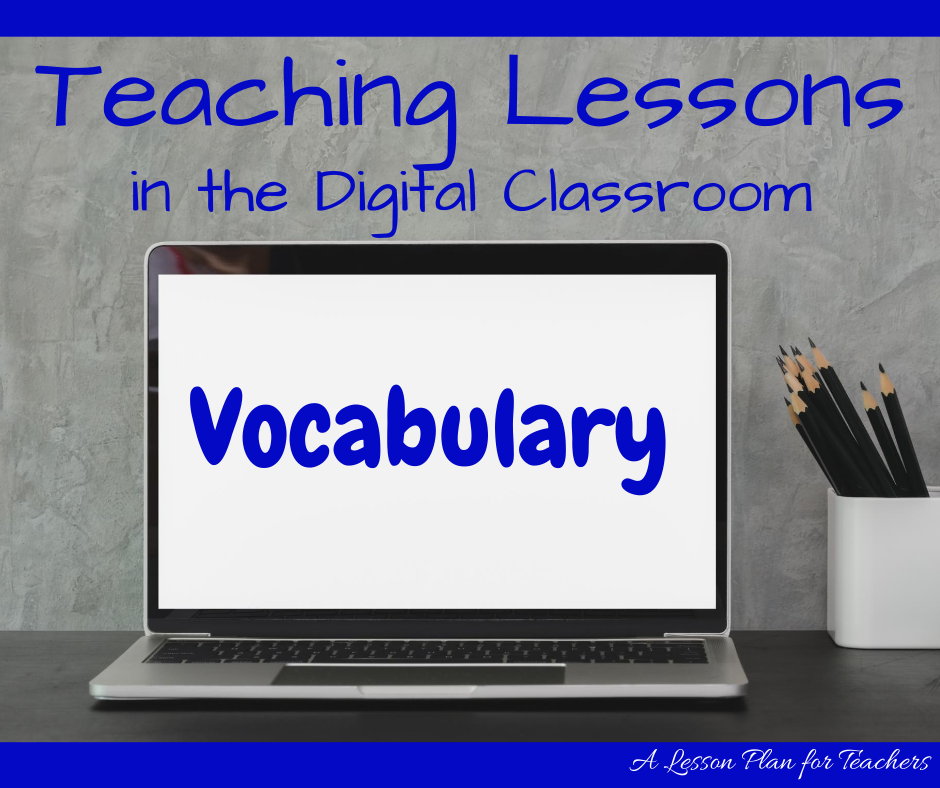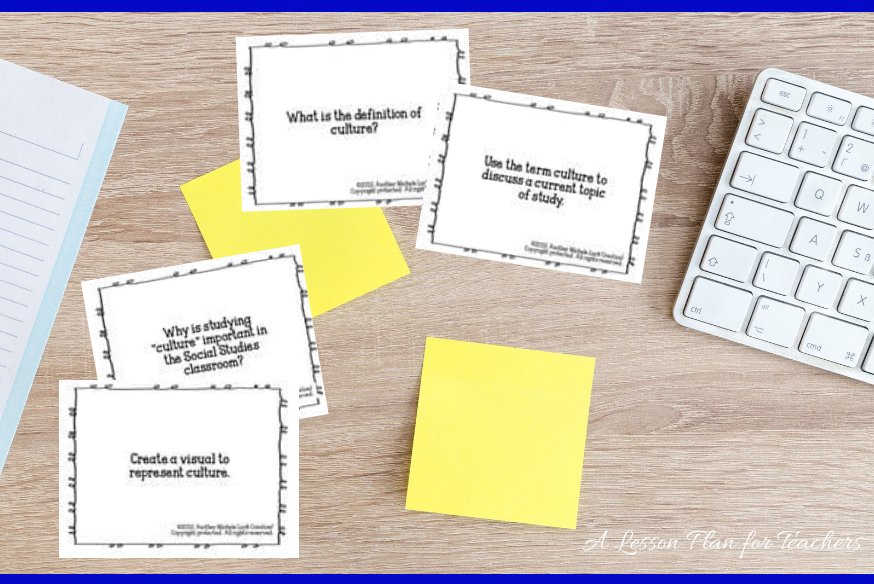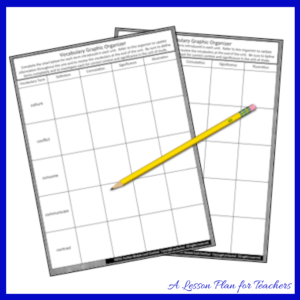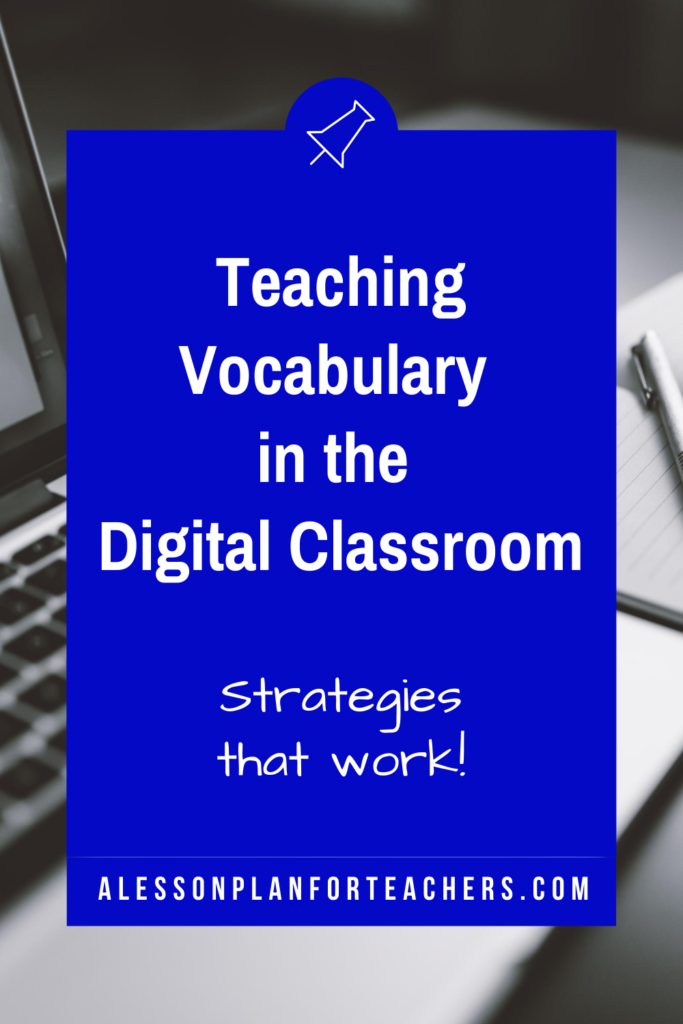While we all know the importance of teaching vocabulary in the Social Studies or History classroom, we are challenged now with finding ways to introduce and reinforce vocabulary in a digital format. There are many tools online, such as Quizlet and Kahoot!, that help in reviewing key terms, but these do not make that first step to initiate the processing students need when expanding new words into their content learning. These strategies may address that gap!
“Words are, in my not-so-humble opinion, our most inexhaustible source of magic.” – J.K. Rowling’s Dumbledore

Strategies for Teaching Vocabulary
When introducing any new content, including vocabulary, tools that help the brain process are vital. These tools are simple, but often overlooked as important in the digital learning format. Have your students do them first, before working on the 1:1 device.
- Have students write the term by hand. While typing is great for reinforcement, our brains need to experience the shape and size of the letters to help put them into context.
- Direct students to define the term in their own words. Copying over rote definitions does not require processing by the brain. Thinking about the term and how to explain it to others (putting it in their own words) does require the extra thought and concept development.
- Examine the term’s context for your lesson purpose. Many vocabulary terms may be used over and over in the Social Studies classroom, but they will take on new or expanded meaning within each new unit. Discuss this progression of the term and have students demonstrate the changes or differences.
- Illustrate the term’s meaning and context. Many of us have long allowed our students to illustrate vocabulary, but we have overlooked the justification for doing so. Drawing, especially with color and texture, will help to create impressions in the brain, again reinforcing the meaning and context, making it easier for students to correctly recall the term when needed.
- Allow students the opportunity to free-form doodle to “think about” the term. Encourage extended development of image or doodle meaning and the use of symbols where possible.
If you’d like more ideas for teaching vocabulary in the classroom (digital or in-person), click to THIS POST to find a great list.

Doing It Digitally
With so many now teaching from home, and most students learning from home, we are tasked with teaching vocabulary in a digital manner. Do so! But don’t forget the basics. Consider these alternatives to an all digital vocabulary activity.
- Have students draw out each term on a whiteboard or piece of printer paper. Encourage them to draw with “fancy” lettering or with block or bubble letters that will require deeper thought for completion. They can then take a picture of the completed work to add into a digital format for submission.
- Use digital vocabulary organizers. Encourage students to use clipart, symbols, thought or speech bubbles in how they complete tasks to show term meaning and context.
- Utilize storyboard tools, like Doodly, to bring life to vocabulary terms. Students can create one-pagers, design word art that shows meaning, or create full stories to utilize the term (and others) from the unit to help reinforce context.
Digital is a Tool

In a 2016 article, Edutopia posted that we process with pencil and paper and produce with technology. This summary is still true today. While technology and 1:1 learning allows us so many new tools for producing assessments and applying knowledge, it still does not have what is required for helping students learn and develop a deeper understanding of new content, including vocabulary.
In our 1:1 world, especially during this era of pandemic learning, we must resist the urge to make every lesson solely an online or on device endeavor. Include paper and pencil. Add in colored pencils. Utilize markers. Add texture. Make sure that students’ hands are doing more than typing on the keyboard.
Don’t Know Where to Start?
If you are just starting off the school year and have no idea where to start with vocabulary lessons, start with Academic Vocabulary that all students should learn in the Social Studies classroom. Start by reading this post to learn more about the terms all students should know or link to my resources on TpT for ready-to-use vocabulary organizers and task cards for contextual understanding!

Finally, practice what you preach! Keep learning vocabulary every day to develop your own brain and keep it working at its best levels. I play crossword puzzles and Words with Friends every day! I do some by hand, and some on my devices. It keeps me processing, producing, and applying while I am having fun at the same time!
Happy Teaching!
